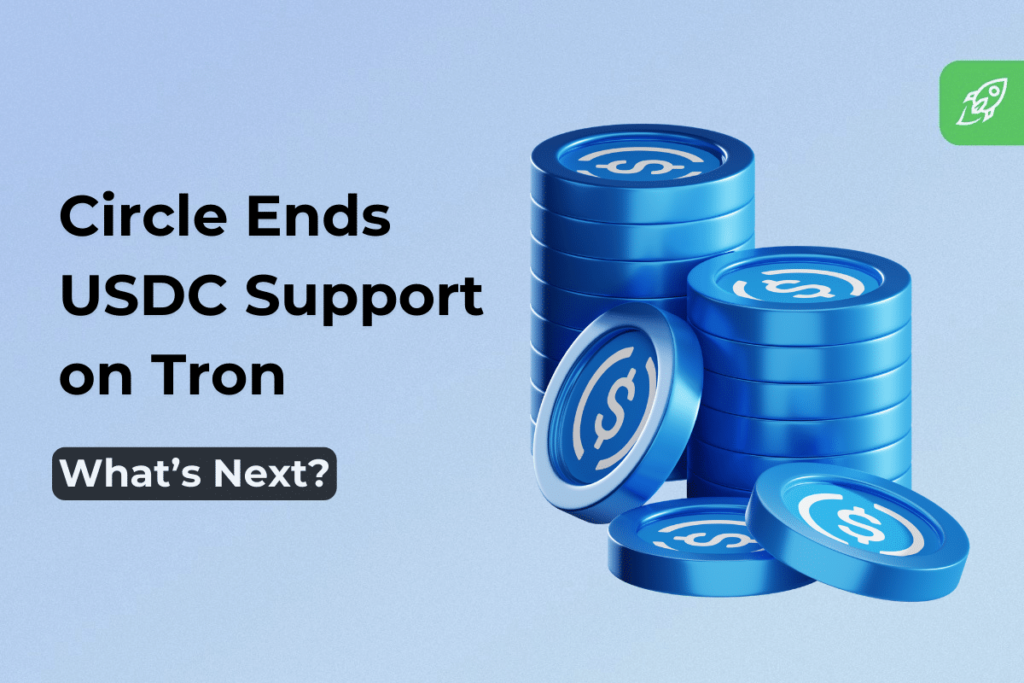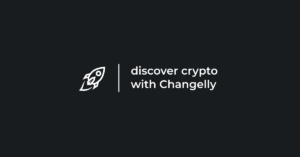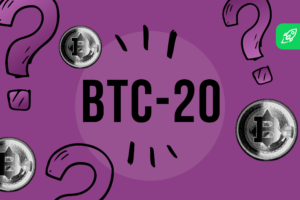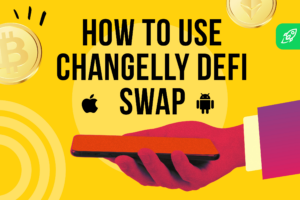Circle Ends USDC Support on Tron, Points to Risk Assessment Measures – Cryptocurrency News & Trading Tips – Crypto Blog by Changelly

As the cryptocurrency world grapples with the twin forces of innovation and regulation, Circle's recent announcement to end support for USDC tokens on the Tron blockchain underscores the complex interplay between advancing technology and compliance with regulatory standards.
Notification and its consequences
In a move that has sent waves through the cryptocurrency community, Circle, a major player in the US crypto market, has announced its decision to end support for its USDC token on the Tron blockchain.
With immediate effect, this decision halts the minting of new USDC tokens on the Tron platform, which has gained popularity for its fast and efficient transactions with stablecoins. Boston-based Circle emphasized that the move is in line with its commitment to maintaining USDC as a trusted, transparent and secure currency.
With USDC being the second largest stablecoin by market capitalization, behind only Tether (USDT), and its $335 million worth hosted on Tron, this move marks a significant shift in the stablecoin ecosystem.
Background and context
Circle's decision comes amid regulatory scrutiny that Tron founder Justin Sun is facing in the United States. Last year, Circle also terminated accounts linked to Sun and its companies following Securities and Exchange Commission (SEC) lawsuits accusing Sun of manipulating trading volumes and selling unregistered securities. This context of legal challenges and compliance issues appears to have influenced Circle's strategic re-evaluation of its blockchain partnerships.
Despite not giving specific reasons for ending support on Tron, Circle made it clear that it is continuously evaluating the suitability of blockchains as part of its risk management framework. The company unveiled plans to phase out USDC from Tron and is advising retail and institutional clients on how to transfer their holdings to other blockchains or exchange them for traditional currency, with a deadline set for February 2025.
Visit our main page to exchange USDC on Tron to other networks or sell it for cash.
The Shift to Solana and the Future of Stablecoins
This development coincides with a significant shift in the stablecoin space, where Solana has become the new favorite for USDC transactions, overtaking Tron in popularity. Over the past six months, Solana has enabled more than 80% of USDC transactions, underscoring its growing dominance in the stablecoin space. This surge in activity is a testament to Solano's technical prowess, but it also signals a broader trend of diversification in the stablecoin market.
Solana has seen a significant increase in the volume of stablecoin transfers over the past few months. Screenshot: Artemis.
In addition, the introduction of new stablecoins on Solana, such as Paxos' USDP, further cements the blockchain's position as the leading platform for stablecoin activity. However, it is important to note that despite these shifts, Tron remains a significant player in the stablecoin arena, especially for USDT, which still boasts over $50 billion in circulation on the platform.
Market dynamics and Tron's continued role
While Circle's withdrawal from Tron may seem like a setback for the blockchain, it's important to note that Tron continues to hold a substantial portion of the stable market, especially with USDT. The dynamic between USDC and USDT illustrates the competitive yet complementary nature of the stablecoin ecosystem, where multiple platforms and tokens exist side by side to cater to different user needs and preferences.
In conclusion, Circle's decision to end USDC support on Tron underscores the evolving nature of the cryptocurrency landscape, where regulatory, technical and market factors are constantly shaping the strategies of major players. As the stablecoin market matures, a focus on compliance, transparency, and user security has become increasingly important and drives the decisions of firms like Circle. Meanwhile, the rise of Solana as the chain of choice for stablecoin transactions signals a shift in the balance of power, suggesting that the future of stablecoins may lie in blockchains' ability to adapt, innovate, and foster trust among users.
Disclaimer: Please note that the content of this article is not financial or investment advice. The information provided in this article is solely the opinion of the author and should not be considered a trading or investment recommendation. We make no guarantees as to the completeness, reliability or accuracy of this information. The cryptocurrency market suffers from high volatility and occasional arbitrary movements. Any investor, trader or regular user of cryptocurrencies should research the various points of view and familiarize themselves with all local regulations before investing.




